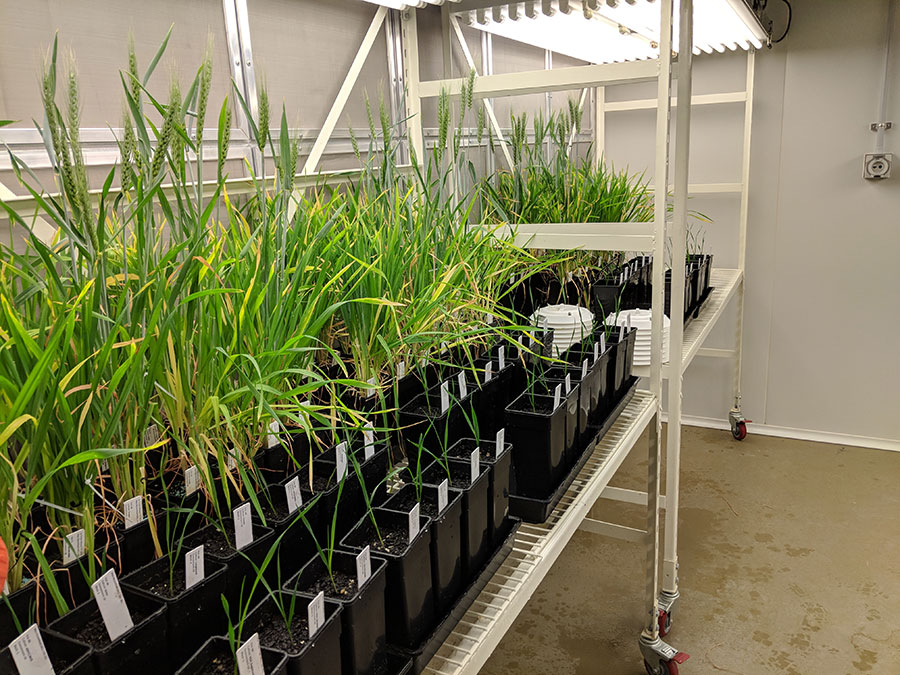An inspiring grains scientist has been a significant influence for Max Bloomfield to pursue a career in the grains industry.
“My motivation to pursue a career in the Australian grains industry began in my first job after university as a research technician with CSIRO,” Mr Bloomfield says.
“This motivated me to pursue further education and I returned to La Trobe University, where I had completed my undergraduate degree, to complete honours and then a PhD under the supervision of Professor James Hunt. His wealth of knowledge and passion for the grains industry has been a big inspiration.”
Mr Bloomfield’s experience is an example of the legacy of capacity building within the grains industry, supported by the GRDC for nearly three decades. Professor Hunt was supported by GRDC to undertake his PhD on the ecology of a summer weed in 2005, while, in turn, one of his supervisors completed a PhD focusing on wheat phenology supported by GRDC in its formative years in the 1990s.
National Phenology Initiative
Mr Bloomfield’s PhD forms part of the GRDC-invested National Phenology Initiative (NPI). The NPI is led by Professor Hunt of La Trobe University and involves a multidisciplinary team of research agronomists, molecular biologists, modellers and data scientists from CSIRO, NSW Department of Primary Industries, South Australian Research and Development Institute, Western Australian Department of Primary Industries and Regional Development, Statistics for the Australian Grains Industry and Plant & Food NZ.

Controlled-environment work completed to derive parameters as part of Max Bloomfield’s contribution to parameterisation of the APSIM Next Generation model. This image shows long day length (17 hours); the bigger plants at the back are not vernalised and the little ones at the front are vernalised. They were just moved in from their eight-week cold treatment, hence the size difference. Photo: Max Bloomfield, La Trobe University
The project’s aim is to better predict phenology – in particular flowering time – of wheat and barley cultivars across the diverse Australian grains environments.
There is a need for more reliable sowing guides, particularly at the point of release of new cultivars, and their crops may therefore be flowering outside the optimal period for their environment. The updated Agricultural Production Systems sIMulator (APSIM) Next Generation simulation software allows for crops to be parameterised with phenology data collected in controlled environments. This captures cultivars’ responses to the environmental factors photoperiod (day length) and vernalisation (extended exposure to cool temperature).
“My role in the NPI was to phenotype 96 Australian wheat and barley cultivars in four controlled environments – 17 or eight-hour photoperiods, with or without eight weeks’ vernalisation at 5°C – and also assist in data collection in field experiments to validate the model,” Mr Bloomfield says.
We found that Australian wheat cultivars had much more diversity in their vernalisation and photoperiod responses, whereas Australian spring barley genotypes only responded to photoperiod.
The data collected is being used by the modelling team to derive parameters for each cultivar in the APSIM Next Generation software and predict time to flowering.
The use of controlled-environment data has improved the accuracy in predicting flowering time in the APSIM Next Generation wheat and barley models compared to the baseline APSIM Next Generation and APSIM Classic.
Controlled-environment data also reduces the time taken to collect parameterisation data from several years to a few months. Once complete, growers will have access to a web-based platform to better inform their cultivar-by-sowing-time decisions for their particular environments.
Mr Bloomfield’s interest in cereal crop phenology was fostered while tending to wheat field experiments when he worked as a research technician for CSIRO in Canberra.
“In the final stages of my PhD I have taken up a role as an agricultural trials officer at Field Applied Research Australia, where I look forward to further building on my knowledge of cropping systems and provide sustainable and economic solutions to the grains industry.”
More information: Max Bloomfield, 0421 233 202, m.bloomfield@latrobe.edu.au, @Blooming_fields, @agronomeiste

























































